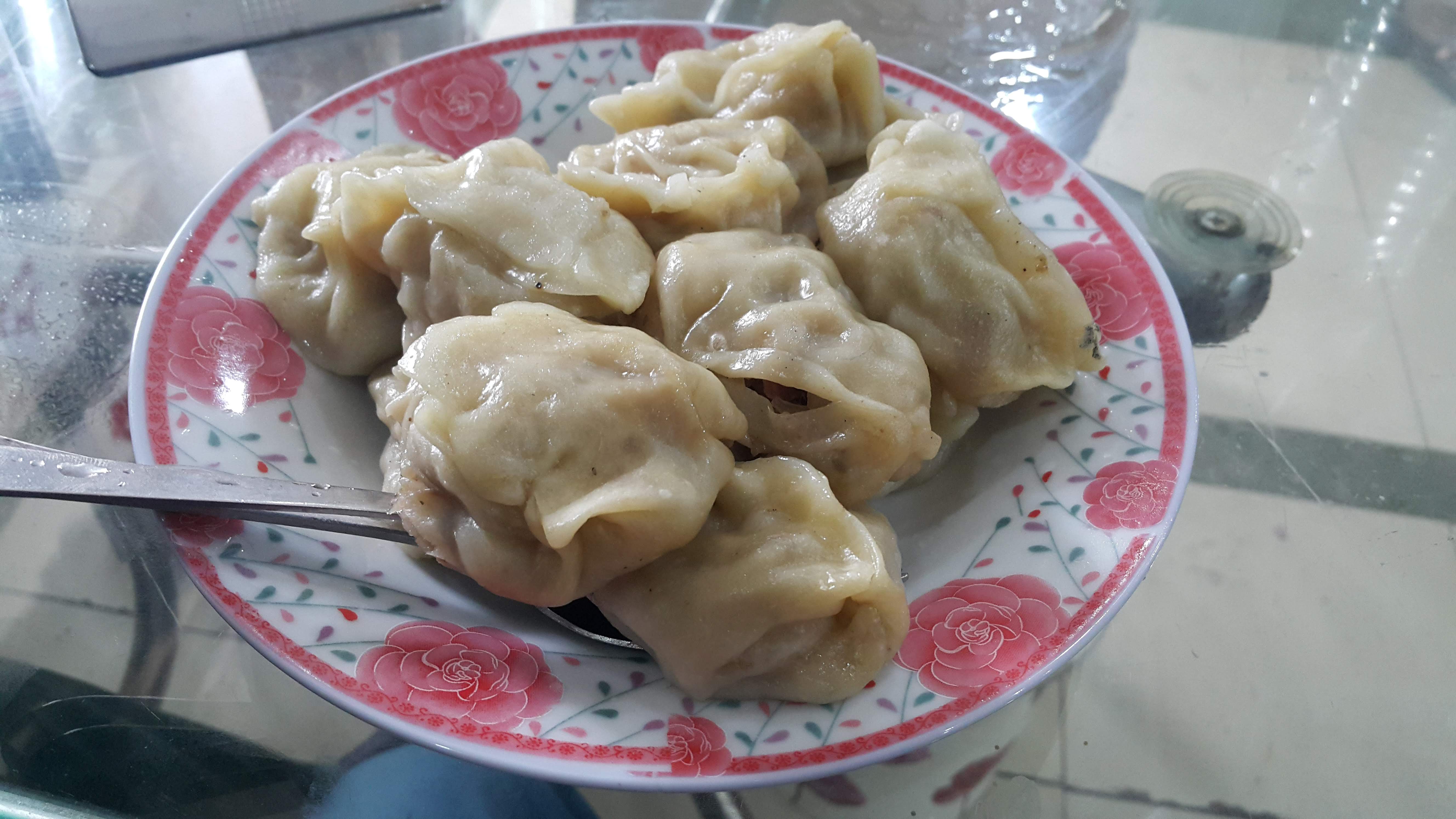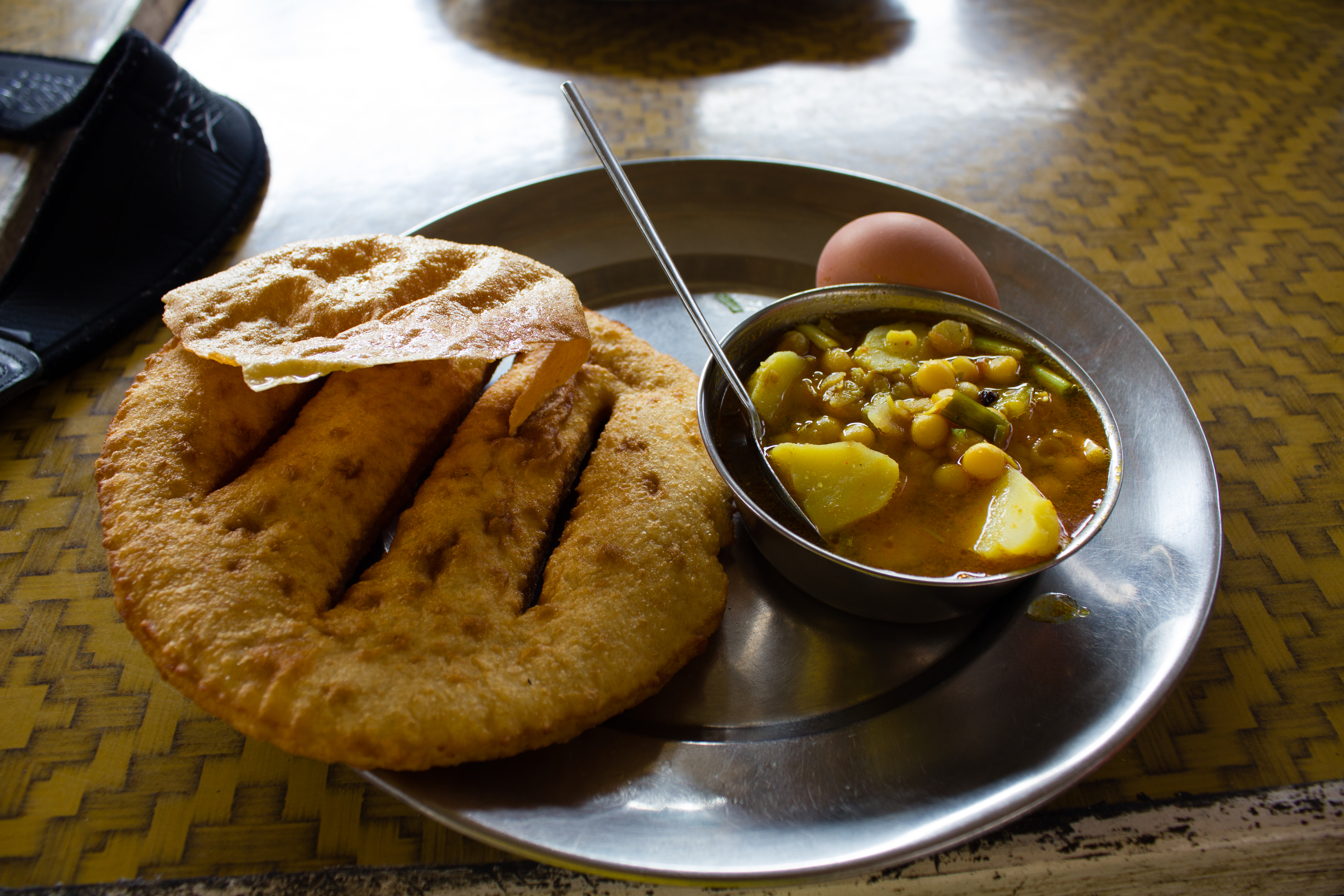|
Momo (food)
Momo is a dish with origins from Tibet. They are bite-size dumplings made with a spoonful of stuffing wrapped in dough. Usually steamed, though they are sometimes fried or steam-fried. The dish has spread to China, Nepal and India. Origin Momo is the colloquial form of the Tibetan word "mog mog". It is possible that this Tibetan word is borrowed from the Chinese term momo (馍馍), a name traditionally used in northwestern Chinese dialects for bread. The word mo (馍) itself means food related to flour. As can be seen in dishes from Shaanxi cuisine like roujiamo and paomo. The different names for the dumpling include Assamese: মম; Bengali: মোমো; Hindi-Urdu: मोमो, مومو; Ladakhi: མོག་མོག་ Nepali: मम; Nepal Bhasa: मम, small momo - ममचा; ; . As for the Himalayan momo, the dish is believed to have spread to Nepal along with the influx of the Tibetan diaspora. Since this dish was initially popular among the Newar community of ... [...More Info...] [...Related Items...] OR: [Wikipedia] [Google] [Baidu] |
Tibetan Cuisine
Tibetan cuisine includes the culinary traditions and practices and its peoples. The cuisine reflects the Tibetan landscape of mountains and plateaus and includes influences from neighbors (including India and Nepal where many Tibetans abide). It is known for its use of noodles, goat, yak, mutton, dumplings, cheese (often from yak or goat milk), butter, yogurt (also from animals adapted to the Tibetan climate), and soups. Vegetarianism has been debated by religious practitioners since the 11th century but is not prevalent due to the difficulty of growing vegetables, and cultural traditions promoting consumption of meat. Crops must be able to grow at high altitudes, although a few areas are at low enough altitude to grow crops such as rice, oranges, bananas and lemons. The most important crop is barley. Flour milled from roasted barley, called ''tsampa'', is the staple food of Tibet, as well as '' Sha phaley'' (meat and cabbage in bread). '' Balep'' is Tibetan bread eaten ... [...More Info...] [...Related Items...] OR: [Wikipedia] [Google] [Baidu] |
Assamese Language
Assamese (), also Asamiya ( ), is an Indo-Aryan language spoken mainly in the north-east Indian state of Assam, where it is an official language, and it serves as a '' lingua franca'' of the wider region. The easternmost Indo-Iranian language, it has over 23 million speakers. Nefamese, an Assamese-based pidgin, is used in Arunachal Pradesh, and Nagamese, an Assamese-based Creole language, is widely used in Nagaland. The Kamtapuri language of Rangpur division of Bangladesh and the Cooch Behar and Jalpaiguri districts of India are linguistically closer to Assamese, though the speakers identify with the Bengali culture and the literary language. In the past, it was the court language of the Ahom kingdom from the 17th century. Along with other Eastern Indo-Aryan languages, Assamese evolved at least before the 7th century CE from the middle Indo-Aryan Magadhi Prakrit. Its sister languages include Angika, Bengali, Bishnupriya Manipuri, Chakma, Chittagonian, Hajong ... [...More Info...] [...Related Items...] OR: [Wikipedia] [Google] [Baidu] |
Hindu Diet
Diet in Hinduism signifies the diverse traditions found across the Indian subcontinent. Hindu scriptures promote a vegetarian dietary ideal based on the concept of ''ahimsa'', non-violence and compassion towards all beings. According to Pew Research Center survey 44% of Hindus say they are vegetarian. History By mid-1st millennium BCE, all three major Indian religions – Hinduism, Jainism and Buddhism – were championing non-violence as an ethical value, and something that affected one's rebirth. By about 200 CE, food and feasting on animal slaughter were widely considered as a form of violence against life forms, and became a religious and social taboo.Marvin Harris (1990)India's sacred cow Anthropology: contemporary perspectives, 6th edition, Editors: Phillip Whitten & David Hunter, Scott Foresman, , pages 201–204 Ralph Fitch, a gentleman merchant of London and one of the earliest English travellers to India wrote a letter home in 1580 stating, "They have a very strange orde ... [...More Info...] [...Related Items...] OR: [Wikipedia] [Google] [Baidu] |
Indo-Gangetic Plain
The Indo-Gangetic Plain, also known as the North Indian River Plain, is a fertile plain encompassing northern regions of the Indian subcontinent, including most of northern and eastern India, around half of Pakistan, virtually all of Bangladesh and southern plains of Nepal. The region is named after the Indus and the Ganges rivers and encompasses a number of large urban areas. The plain is bound on the north by the Himalayas, which feed its numerous rivers and are the source of the fertile alluvium deposited across the region by the two river systems. The southern edge of the plain is marked by the Deccan Plateau. On the west rises the Iranian Plateau. Many developed cities like Delhi, Dhaka, Kolkata, Lahore and Karachi are located in the Indo-Gangetic Plain. History The region is known for the Indus Valley civilization, which was responsible for the birth of ancient culture of the Indian subcontinent. The flat and fertile terrain has facilitated the repeated rise and exp ... [...More Info...] [...Related Items...] OR: [Wikipedia] [Google] [Baidu] |
Lhasa Newar (trans-Himalayan Traders)
Lhasa Newar (alternate name: Lhasa Newah) () refers to the expatriate Newar traders and artisans who traveled between the Kathmandu Valley and Tibet from centuries ago. These Nepalese merchants conducted trade between Nepal, Tibet and Bengal, India over the Silk Road, and acted as a bridge for economic and cultural exchanges between South Asia and Central Asia. Along with the merchants, there were colonies of artisans in various parts of Tibet who were engaged in creating Buddhist art. They were major players in the exchange of art styles across the Himalaya. The thousand-year-old Lhasa Newar tradition came to an end after the caravan route linking India and Tibet through Sikkim was shut down by the Sino-Indian War in 1962. Subsequently, the merchants and craftsmen based in Tibet closed up shop and returned home to Nepal for the last time. History According to folklore, Singha Sartha Aju was the first merchant to travel to Tibet. The history of the Lhasa Newars officially dates ... [...More Info...] [...Related Items...] OR: [Wikipedia] [Google] [Baidu] |
Kathmandu Valley
The Kathmandu Valley ( ne, काठमाडौं उपत्यका; also known as the Nepal Valley or Nepa Valley ( ne, नेपाः उपत्यका, Nepal Bhasa: 𑐣𑐾𑐥𑐵𑑅 𑐐𑐵𑑅, नेपाः गाः)), is a bowl-shaped valley located in the Himalayan mountains in Nepal. It lies at the crossroads of ancient civilizations of the Indian subcontinent and the broader Asian continent, and has at least 130 important monuments, including several pilgrimage sites for Hindus and Buddhists. There are seven World Heritage Sites within the valley. The Kathmandu Valley is the most developed and the largest urban agglomeration in Nepal with about 5 million population. The urban agglomeration of Kathmandu Valley includes the cities of Kathmandu, Lalitpur, Budhanilkantha, Tarakeshwar, Gokarneshwar, Suryabinayak, Tokha, Kirtipur, Madhyapur Thimi, Bhaktapur, etc. The majority of offices and headquarters are located in the valley, making it the econom ... [...More Info...] [...Related Items...] OR: [Wikipedia] [Google] [Baidu] |
Newar People
Newar (; new, नेवार, endonym: Newa; new, नेवा, Pracalit script:) or Nepami, are the historical inhabitants of the Kathmandu Valley and its surrounding areas in Nepal and the creators of its historic heritage and civilisation. Page 15. Newars form a linguistic and cultural community of primarily Indo-Aryan and Tibeto-Burman ethnicities following Hinduism and Buddhism with Nepal Bhasa as their common language. Newars have developed a division of labour and a sophisticated urban civilisation not seen elsewhere in the Himalayan foothills. Newars have continued their age-old traditions and practices and pride themselves as the true custodians of the religion, culture and civilisation of Nepal. Newars are known for their contributions to culture, art and literature, trade, agriculture and cuisine. Today, they consistently rank as the most economically and socially advanced community of Nepal, according to the annual Human Development Index published by UNDP. ... [...More Info...] [...Related Items...] OR: [Wikipedia] [Google] [Baidu] |
Tibetan Diaspora
The Tibetan diaspora are the diaspora of Tibetan people living outside Tibet. Tibetan emigration has three separate stages. The first stage was in 1959 following the 14th Dalai Lama's defection to Dharamshala in Himachal Pradesh, India. The second stage occurred in the 1980s, when China partially opened Tibet to foreigners. The third stage began in 1996 and continues today although with less frequency. There is considerable social tension between first and second wave refugees, referred to as 'Shichak Tibetans' and third wave refugees referred to as 'Sanjor Tibetans'. The label 'Sanjor' is deemed a pejorative by the newcomer Tibetans. Robbie Barnet, professor at the University of London speculates that Baimadaiji Angwang case in USA, an ethnic Tibetan born in Tibet, might worsen the situation of mutual distrust between the two social groups, potentially a barrier to the unity of the Tibetan diaspora. Not all emigration from Tibet is permanent; some parents in Tibet sent their ... [...More Info...] [...Related Items...] OR: [Wikipedia] [Google] [Baidu] |
Nepal Bhasa
Newar (), or Newari and known officially in Nepal as Nepal Bhasa, is a Sino-Tibetan language spoken by the Newar people, the indigenous inhabitants of Nepal Mandala, which consists of the Kathmandu Valley and surrounding regions in Nepal. "Nepal Bhasa" literally means "Nepalese language", however the language is not the same as Nepali (Devanāgarī: नेपाली), the country's current official language of the central government. The two languages belong to different language families (Sino-Tibetan and Indo-European, respectively), but centuries of contact have resulted in a significant body of shared vocabulary. Newar was Nepal's administrative language from the 14th to the late 18th century. From the early 20th century until democratisation, Newar suffered from official suppression. From 1952 to 1991, the percentage of Newar speakers in the Kathmandu Valley dropped from 75% to 44% and today Newar culture and language are under threat. The language has been li ... [...More Info...] [...Related Items...] OR: [Wikipedia] [Google] [Baidu] |
Nepali Language
Nepali (; , ) is an Indo-Aryan language native to the Himalayas region of South Asia. It is the official, and most widely spoken, language of Nepal, where it also serves as a '' lingua franca''. Nepali has official status in the Indian state of Sikkim and in the Gorkhaland Territorial Administration of West Bengal. It is spoken by about a quarter of Bhutan's population. Nepali also has a significant number of speakers in the states of Arunachal Pradesh, Assam, Himachal Pradesh, Manipur, Meghalaya, Mizoram and Uttarakhand. In Myanmar it is spoken by the Burmese Gurkhas. The Nepali diaspora in the Middle East, Brunei, Australia and worldwide also use the language. Nepali is spoken by approximately 16 million native speakers and another 9 million as a second language. Nepali is commonly classified within the Eastern Pahari group of the Northern zone of Indo-Aryan. The language originated from the Sinja Valley, Karnali Province then the capital city of the Khasa K ... [...More Info...] [...Related Items...] OR: [Wikipedia] [Google] [Baidu] |









